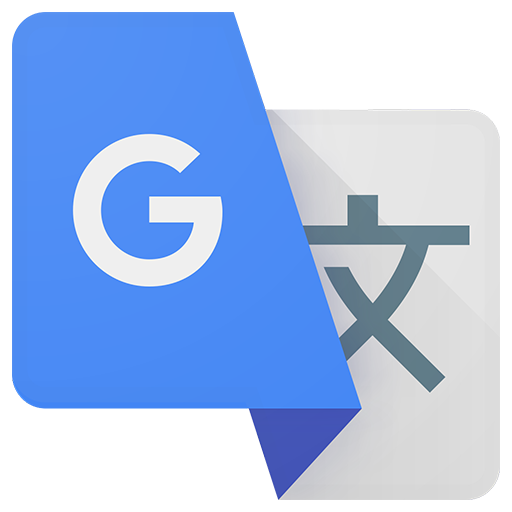
9 Best Language Learning Apps for Travelers in 2024
Embarking on the trip of a lifetime, studying abroad for college or having a bad case of wanderlust?
As the saying goes: There’s an app for that.
In this post, I’ll detail nine of the best language learning apps for travel, whether you’re hoping to meet some friends or perfect your pronunciation.
We’ll also cover how to choose a travel app to serve your language needs.
Let’s get started!
Contents
- 1. Best Translation App: Google Translate
- 2. Best Immersive Learning App: FluentU
- 3. Best Free Learning App: Duolingo
- 4. Best for Memorizing Vocabulary: Memrise
- 5. Best for Chatting with Natives: Tandem
- 6. Best for Voice Recognition: iTranslate
- 7. Best for Reading Asian Menus: Waygo
- 8. Best for Making Connections: HelloTalk
- 9. Best Pronunciation Guide: (How to) Pronounce
- How to Pick the Best Language Learning Apps for Travel
Download: This blog post is available as a convenient and portable PDF that you can take anywhere. Click here to get a copy. (Download)
1. Best Translation App: Google Translate
Available on: Android | iOS
Price: Free
The Google Translate app can instantly translate what you see on your travels.
Press the camera icon for a live translation and press the shutter to pause it for a closer read. Additionally, you can upload a picture you’ve already taken for the same type of translation.
You can do this with street signs, restaurant menus, food packaging instructions, newspaper headlines and more.
There’s also text lookup and voice recognition functions, with the latter allowing you to carry a conversation with a native speaker.
Google Translate supports translations for 100+ languages. You can even download specific language packs for offline use.
2. Best Immersive Learning App: FluentU
Available on: Android | iOS
Price: Pricing information available here
FluentU is an educational mobile app that immerses you in your target language through fun, authentic videos of native speakers in various settings. Each video comes with subtitles that supply you with all the information you need to understand the video, from definitions and sentences to pronunciation guides and related clips.
Warm up for your trip with FluentU, which can help you prepare by showing you situations you may actually encounter—like ordering in a restaurant in Japan or seeing the sights in Quebec.
You can also use the search bar to find places, activities, food and more. For example, maybe you search for “castles” once you get to Germany and wind up considering a day trip to the Neuschwanstein. Or maybe you’re in Spain so you type in “Alhambra” because that’s where you’re going to be next week.
3. Best Free Learning App: Duolingo
Available on: Android | iOS
Price: Free; Super plans starting at $7.99 per month
A classic language learning app with gamified lessons, useful vocabulary and a logical learning structure, Duolingo can help travelers make the most of their trip by teaching them words and phrases that will really come in handy.
Though the premium plan removes ads and offers some additional practice functions (including unlimited lives), the free version has more than enough information and activities to give you a solid foundation in listening and reading your target language. You can even practice your speaking and pronunciation with the voice recognition feature.
For more information, you can check out our full Duolingo review here.
4. Best for Memorizing Vocabulary: Memrise
Available on: Android | iOS
Price: Free; Pro plans starting at $8.49 per month
Memrise integrates the latest in memory research and gets you learning foreign words and phrases efficiently using the best-known methods of spaced repetition study.
The app will first introduce the word and let you pick the English translation from a set of choices. Then, Memrise keeps things interesting by using a number of mini tasks to help you slowly integrate the target words into your memory.
This app supports over 20 languages. So, by the time you get on the plane and find yourself next to a native speaker, you’ll have something to contribute to the conversation other than that gorgeous smile.
See our full Memrise review here.
5. Best for Chatting with Natives: Tandem
Available on: Android | iOS
Price: Free; Pro plans starting at $6.67 per month
Tandem is a language exchange app. “Language exchange” is when you speak your first language with a learner and they speak their first language with you so you can both practice and improve.
For example: You’re an English speaker learning Korean. The Tandem app can connect you to a native Korean speaker learning English. In fact, you can find speakers of 150+ different languages here.
This can help you find some friends who reside in the country you’ll be visiting. There’s nothing like a local guide to immerse you in the target language. (Of course, follow standard safety precautions: Never meet anyone alone, and always meet in public places.)
You can see more in our full Tandem review.
6. Best for Voice Recognition: iTranslate
Available on: Android | iOS
Price: Free; Pro plans starting at $5.99 per month
The free version of iTranslate is good for text translations, so you can enter over 100 languages and get the output in your native language.
The app is actually known for its voice recognition technology, however. Speak into your phone, and it will convert your words into text in the desired language. The Pro version even offers direct voice-to-voice translations.
iTranslate can also translate entire websites, and the app contains dictionaries so you can look up words, as well as verb conjugations—basically a complete language cheat sheet for your travels.
7. Best for Reading Asian Menus: Waygo
Available on: iOS
Price: Free (10 translations per day); plans starting at $1.99 per week
Going to China, Japan or Korea? Then the Waygo app is a must-have.
More general translation apps sometimes have trouble when it comes to Asian scripts like those used for Chinese, Japanese and Korean, but this app was actually designed specifically for them.
So, if you find yourself looking at indecipherable text in these languages, simply point your camera at them and an instant translation will be given. You’ll hear how the words are pronounced alongside a pronunciation guide.
Best of all, Waygo works offline. This award-winning app works best on signage, menus and other printed materials.
8. Best for Making Connections: HelloTalk

Price: Free; plans starting at $12.99 per month
Like Tandem, HelloTalk is a language exchange app. The same setup applies: You find a native speaker of your target language and chat in that one and your native language so you both get to practice.
Unlike Tandem, however, HelloTalk also features some designs that are more reminiscent of social media platforms. Users can post “Moments” (pictures and/or text) so others can see local life and leave comments.
This app claims to have 40 million users from over 150 countries. There are also teacher-led livestreams and the option to take one-on-one language lessons.
For more information, see our full HelloTalk review.
9. Best Pronunciation Guide: (How to) Pronounce
Available on: iOS
Price: Free; English specialty lists starting at $0.99
Pronunciation is as important as vocabulary and grammar. You don’t want to memorize all your lines before a big trip, only to discover that native speakers can’t understand a single word you say.
That’s where this app comes in. Enter a word in one of the 18 supported languages, and you’ll hear it spoken by a native speaker. You can even vary the speed to hear greater nuance in the sounds.
Whether you’re a language learner struggling with intonation and emphasis, a business traveler hoping to impress foreign colleagues, an actor taking on a very specific role or something else altogether, (How to) Pronounce can help the words roll right off your tongue.
How to Pick the Best Language Learning Apps for Travel
Consider how many apps a traveler might need: flight apps, hotel apps, weather apps, currency/banking apps… the list goes on. But each serves a particular purpose.
In the same way, language learning apps all have their own special strengths.
Here are a few considerations to keep in mind when choosing language learning apps for your travels:
- Compatibility. Besides the classic iOS vs. Android compatibility, you’ll want to make sure your chosen app(s) also work for your preferred mode of communication.
Do you want a voice translator app to do the heavy lifting of translating your speech to your host country’s language? Do you want to learn the most common phrases in the language yourself, no translation necessary? Or do you just want to be able to look up written text quickly?
- User reviews. Don’t just rely on the developer’s take. Scroll through the reviews to see how the app actually fares in the field. Look for repeating themes and common observations—good and bad.
It’s also a good idea to see which languages others have used the app for. Not all apps are equally effective for all languages, so one that works great for European languages might leave you clueless in China or Korea, for instance.
- Commitment. Avoid apps that might interfere with your travel experience. An app should not require you to be so involved that you forget you’re in one of the most beautiful gardens in Europe. A great app facilitates rather than distracts.
- Usability. Pick app(s) with a friendly user interface that’s easy to navigate. It should get you what you want quickly and let you move along. For example, if you’re only going to Spain, you don’t necessarily need something with 50+ language options, especially if it’s hard to get to the Spanish-specific features.
As a final tip, just so you can fully appreciate your travel experience and maximize your app usage at the same time: Practice using it a few weeks before you leave.
By the time you board the plane, you should know how to use your apps. You should already know what each one is capable of, as well as any limitations and shortcuts. You shouldn’t be firing it up for the first time in your destination.
Any combo of these language apps will have your back when you’re abroad (as long as you prepare).
So get ready to have the travel experience of your dreams and the language learning experience of a lifetime!
Download: This blog post is available as a convenient and portable PDF that you can take anywhere. Click here to get a copy. (Download)










